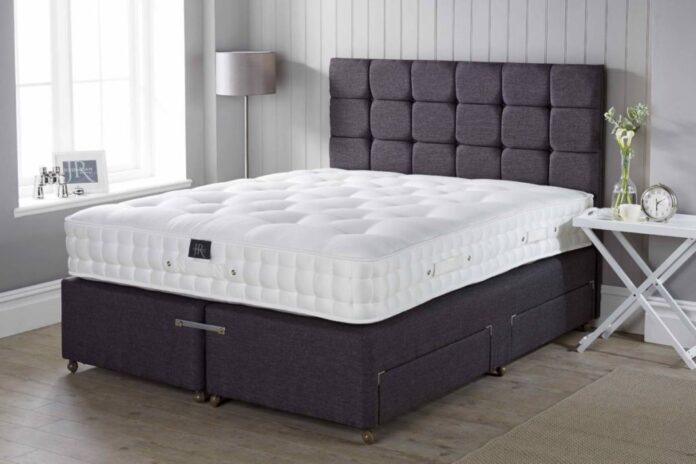While it might be more fun to focus on the finer details of home décor, the major structural elements of the home have a much more significant impact on your everyday living experience. The best example of this is your mattress — you might not see it, but it affects almost every moment of your life. Thus, it is important to invest in a mattress that is perfect for your health and wellness.
These days, mattresses come in a range of materials, and each material is more suitable to a certain kind of sleeper. Here’s a quick and useful guide to all the materials used in mattresses, so you can make an informed investment on your next mattress shopping journey.

Metal Coils
Innerspring mattresses use metal springs to support the body during sleep — but that’s not the only material present in this kind of mattress. Though metal coils make up most of the structure of the mattress, innerspring mattresses typically also use polyester stuffing, foam and other elements to cushion the springs and provide greater comfort. It is important to research the details of any innerspring mattress that you are interested in buying, so you can better understand exactly what materials are present inside.
Air
When you think of an air mattress, you might think of a temporary bedding solution for short-term guests — but air has long been a material used in real mattresses, too. In particular, Sleep Number mattresses use air to inflate or deflate the mattress, changing the softness or firmness for individual sleepers. Like innersprings, airbeds often use layers of other materials, like foams and gels, on top of the air pocket to improve comfort.
Water
Waterbeds are less popular nowadays than a few decades ago, but some sleepers still swear by the waterbed’s ability to soothe a tired body. Today’s waterbeds tend to be high-tech, allowing sleepers to adjust how much water is present in different chambers and how water flows around the bed. However, waterbeds are extremely heavy, and there is always a possibility that one will develop a leak.
Polyurethane (Memory Foam)
Famously, memory foam was developed to improve the safety and comfort of astronauts going to space, and today, the polyurethane foam has become a common mattress material. Memory foam is inexpensive and reliable, providing a cradling comfort that many sleepers enjoy. Unfortunately, memory foam wears out quickly, especially if it isn’t cleaned properly or rotated regularly. Worse, polyurethane is a notorious producer of volatile organic compounds, or VOCs, which fill the air around the mattress and can cause allergic reactions in some sleepers.
Latex

Latex is the product of the rubber tree, which makes a natural latex mattress one of the most untreated and sustainable mattress materials available. Latex offers a similar experience to memory foam, but because it is a natural product, it does not emit the toxic VOCs of polyurethane. However, latex does have a reputation for being slightly bouncier, which might not be ideal for some sleepers. Plus, it is important that you understand the difference between natural latex and synthetic latex, which can have the same off-gassing issue as memory foam.
Natural Fiber
If you see a mattress advertised as using “natural fiber,” it is likely an innerspring mattress that has swapped out synthetic fibers in its stuffing and covering for natural fibers like cotton, bamboo and perhaps natural latex. If buying a sustainable, eco-friendly, natural mattress is important to you, you should look deeper into the fibers used in a natural fiber mattress and the practices used in manufacturing those fibers to be certain it isn’t disingenuous marketing.
Gel
One of the newest mattress materials on the market, gel is rapidly gaining popularity for its many benefits. Gel allows the body to sink in and feel cradled, but its low surface area of contact prevents the trapping of heat. Plus, gel mattresses bounce back more effectively, likely offering a longer lifespan and requiring less maintenance than other mattress materials. However, because gel mattresses are so new, they also tend to be exceedingly expensive and generally out of budget for most mattress buyers.
Now that you know a bit more about the most common materials in mattresses, you shouldn’t feel as stressed by your next mattress shopping excursion.






